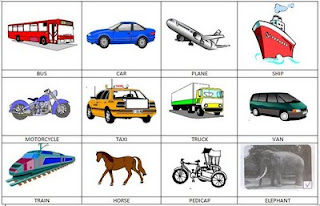Tips for Good Writing
Copyright 2005 by Richard F. Hirsh
Copyright 2005 by Richard F. Hirsh
- Generally, I will give high grades to papers that I can read quickly. In other words, if the papers are interesting, have few typographical errors, grammatical problems, etc., they will receive high grades. If I need to correct spelling, grammar, sentence structure and so on, I will be slowed down, and I will lose track of your major arguments. So, your goal should be to write papers that I can read quickly!
- Though you are not learning to be journalists, at least one journalistic technique will prove useful, at least in writing short papers. Namely, consider writing an interesting first paragraph that broadly outlines the goal and main theme of the paper. In successive paragraphs, develop those themes introduced in the first. This technique provides the reader with important information quickly and efficiently. (In journalism, this technique is often referred to as the "inverted pyramid," in which 80% of the story content can be obtained in the first paragraph.)
- Use interestingly written topic sentences near the beginning of each paragraph. We sometimes forget this simple approach, taught to us in grade school, in the hope that more convoluted and "sophisticated" paragraph structures make us appear more learned.
- Avoid phrases that use lots of commas. For example:
Original: "This book represented, in general, a good effort."
Better: "In general, this book represented a good effort."
Best: "This book represented a good effort." (Consider whether you truly need the modifier, "in general.")
- Use shorter rather than longer sentences. Long sentences that have lots of parenthetical phrases are hard to digest and understand. Also, you will find that you often use more words than necessary to convey an idea. Write economically, as if every word costs you money! Of course, you don't want lots of short, choppy sentences either. You'll need to find a balance between the two extremes.
- Read your papers aloud. If you can't read a sentence without gasping for breath, it is too long. Moreover, listen to yourself. Do the sentences sound like something you would say in public?
- Avoid passive voice. (For example: "It was decided..." Who made the decision?) Also shun the verb "to be." Use active verbs instead. They make sentences more lively.
- Don't start a sentence with the words "What," as in "What I'm arguing is..." because it usually means you'll use the verb "to be." You can write the sentence better without this construction. ("I argue that...) Of course, use "What" if the sentence is a question. ("What is going on?" she asked.)
- Likewise, don't start a sentence with the word "Which" unless it is a question, as in "Which is why the president signed the bill." You may see this construction in the popular press, but it is incorrect, since the sentence doesn't properly contain a subject.
- Don't internalize knowledge. From your readings, you will have become very familiar with a certain subject and its jargon. Don't assume that your readers know as much as you do. If you use specialized terms or expressions, provide short definitions of them.
- When you use pronouns such as "this" and "it," make sure they clearly refer to the appropriate nouns. Consider these sentences: "The motor in the first French automobile evolved well before its introduction in America. This proves the hypothesis offered by F.W. Langweilig." What does the "its" refer to? The "motor" or the "automobile?" And what does "This" refer to? In other words, be careful when you use such pronouns.
- Remember that "it's" means "it is." Don't use "it's" instead of the possessive "its." Know the difference.
- Please proofread papers and use spell-checkers, dictionaries, etc. I dislike correcting typing and spelling errors.
- I encourage you to have colleagues read and edit your drafts before you turn them in to me.
- Avoid using the same words (especially verbs and nouns) in the same sentence or paragraph. Employ different words to provide variety and interest. Utilize a thesaurus if necessary. (See how I avoided the word "use" in each of the last three sentences? On the other hand, I dislike the word "utilize." It sounds too formal and harsh.)
- Technically, you should not use split infinitives. (For example, "to boldly go...")
- Avoid clich�s like the plague. (A joke, but do you get the idea?)
Remember the first tip: quickly read papers get the highest grades!
Finally, here are a few links to sites that can help you with your writing:
- Elements of Style--a classic style manual, containing information on footnoting, punctuation, capitalization, and so on.
- Thesaurus.com--for finding just the correct word. Also an on-line dictionary.
- Bartlett's Familiar Quotations--for finding just the correct quotation.
- Guidelines for Term Papers--some good advice on writing from Dr. Donald E. Simanek of Lock Haven University, PA.
- Virginia Tech Writing Center--On-line and in-person assistance with your writing on the Virginia Tech campus.
- How to write good--very funny tips for better writing. Just remember: if you follow these tips, you flunk the course!
- How to write gooder--still more humorous advice about writing, by Michael O'Donoghue.
- source :http://www.history.vt.edu/Hirsh/writtips.html








.svg.png)
